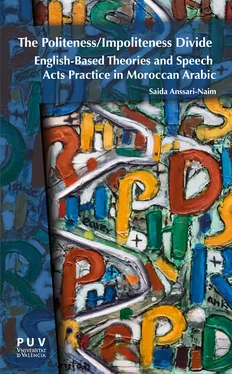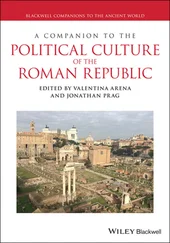Norms are not straightforward entities, but rather highly versatile argumentative tools, and their nature and operational aspects need to be examined more closely before they can be posited as explanatory concepts- and before they can be allocated any scientific role whatsoever. (Eelen 2001: 233; cit. in Terkourafi 2005: 243)
Politeness and the frame-based view : One critique of the post-modern view is that it emerged out of a dissatisfaction with traditional theories of politeness, which they sought to remedy by “importing insights from social theory into pragmatics, or rather, exporting politeness into the realm of social theory” (Terkourafi 2005: 246). In ‘Beyond the micro-level in politeness research’ (2005) Terkourafi argues that the post modern-view is an extension of the traditional view:
Despite departing from the traditional theories in this respect, post-modern theories share with them the two premises, which may after all prove crucial. The first premise is that both types of theory are theory-driven. Their respective points of departure are concrete theoretical preoccupations- the Co-operative Principle and speech act theory on the one hand, the notion of politeness1 and discursive struggle over politeness on the other. These theoretical preoccupations then provide the lens through which they approach the data, invariably coloring their analyses. This theoretical focus is seen most clearly in the attitude the two types of theory adopt towards the notion of norms. On the one hand, traditional theories assume the existence of norms a priori, hence they do not bother engaging in quantitative analyses of the data. On the other hand, post-modern theories challenge current understandings of norms, pre-empting the value, or indeed the possibility, of quantitative analyses. The second premise shared by both traditional and post-modern views is their analysis of politeness on the pragmatic level as particularized implicature. (Terkourafi 2005: 246)
Terkourafi then proposes an alternative, or rather a complement, to both traditional and post-modern views, which she notes are theory-driven. This alternative is the frame-based view (Terkourafi 2001, cit. in Terkourafi 2005: 246) which is data-driven and concerned with the analysis of large corpora of naturally occurring interactions as a means of observing the regularities between linguistic expressions and their co-occurrence in their extra-linguistic contexts of use. According to Terkourafi, in order to uncover these regularities it is necessary to categorize real life contexts into types of context. This can be done through recourse to the notion ‘frame’, adapted from related notions in (Minsky 1975), as well as from psychology (Schank and Abelson 1977) and linguistics (Fillmore 1982). The frame-based view of politeness is characterized by a focus on politeness as all face-constituting linguistic behaviour that can account for linguistic behaviour through the lens of its face-constituting potential.
Critiques of politeness theories : Some scholars have been criticized for their view of interaction as problematic and for seeing speakers in a permanent struggle to avoid the ‘conflict’, ‘threat’ and ‘friction’ which is supposedly a constant feature of interaction with others. Scholarly notions of politeness have also been criticized for being too vague (Watts, Ide and Ehlich 1992: xvi), pessimistic and overtly paranoiac. Richard Smith, in his critique to Brown and Levinson’s conceptualization of politeness as the realization of face-threat mitigation (Schmidt 1980: 104), argues that it is “an overtly pessimistic, rather paranoid view of human social interaction”. Lakoff (1975, cit. in Watts 2003) suggests “politeness is developed by societies in order to reduce friction in personal interaction”. On the other hand, Leech (1980: 19) defines politeness as “strategic conflict avoidance and it can be measured in term of the degree of effort put into the avoidance of conflict situation”.
On the same lines, Brown and Levinson (1978-1987) claim politeness to be “a rational behaviour aimed at strategic softening (or mitigation) of face threatening acts”. Kasper (1990) regards politeness as a set of strategies “to diffuse the danger and to minimalise the antagonism” in so far that he envisages communication as “a fundamentally dangerous and antagonistic endeavour” (Kasper 1990: 194). Hill et al. (1986) regard politeness as “one of the constraints on human interaction, whose purpose is to consider others’ feelings, establish levels of mutual comfort and promote rapport”. Another case in point is the issue as to whether im/politeness should be studied as a lay or folk notion, which has been termed First Order im/politeness (Cf. Eelen 2001, Watts 2003, Locher 2004, 2006, Locher and Watts 2005), or as a theoretical construct to be used for the sociolinguistic and pragmatic research, termed Second Order im/politeness (Watts 2003). However, even those who consider im/politeness to be a theoretical concept diverge as to a definition. Politeness has been approached in terms of maxims and norms, embracing face-work, adherence to social norms and adequate behaviour, and impoliteness as a deviation or infraction of such these norms.
We can argue, in summary, that all of the theories of politeness have a ‘reason to be’, in that analysts draw on their own intuition and their local understanding about what is polite. I don’t consider the existence of contradictory theories in the field to be a problem; on the contrary, it seems to me pointless to claim one valid norm for all cultures.
Конец ознакомительного фрагмента.
Текст предоставлен ООО «ЛитРес».
Прочитайте эту книгу целиком, купив полную легальную версию на ЛитРес.
Безопасно оплатить книгу можно банковской картой Visa, MasterCard, Maestro, со счета мобильного телефона, с платежного терминала, в салоне МТС или Связной, через PayPal, WebMoney, Яндекс.Деньги, QIWI Кошелек, бонусными картами или другим удобным Вам способом.











